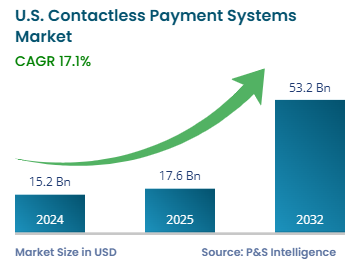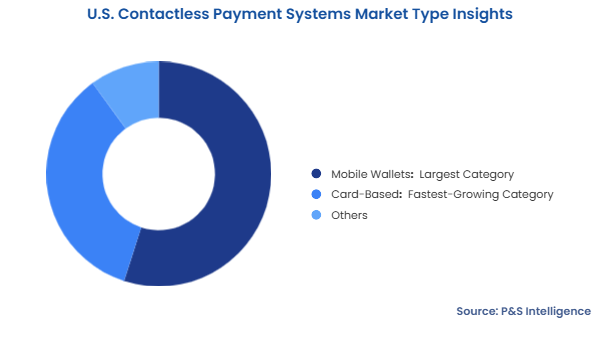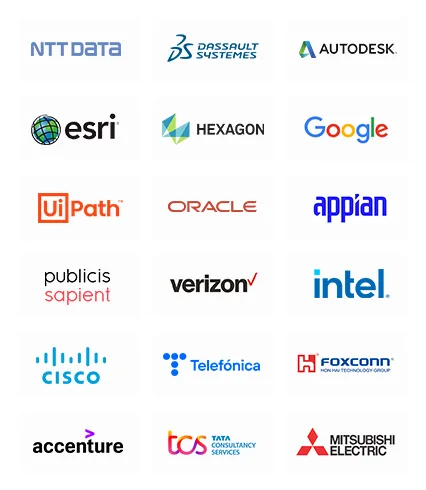Key Highlights
| Study Period | 2019 - 2032 |
| Market Size in 2024 | USD 15.2 Billion |
| Market Size in 2025 | USD 17.6 Billion |
| Market Size by 2032 | USD 53.2 Billion |
| Projected CAGR | 17.1% |
| Largest Region | West |
| Fastest Growing Region | South |
| Market Structure | Fragmented |
Report Code: 13544
This Report Provides In-Depth Analysis of the U.S. Contactless Payment Systems Market Report Prepared by P&S Intelligence, Segmented by Type (Smartphone Based Payments, Card Based Payments), Application (Retail, Transportation, Healthcare, Hospitality), Technology (Near Field Communication (NFC), Radio Frequency Identification (RFID), Bluetooth Low Energy (BLE), Host Card Emulation (HCE), Magnetic Secure Transmission (MST)), and Geographical Outlook for the Period of 2019 to 2032
| Study Period | 2019 - 2032 |
| Market Size in 2024 | USD 15.2 Billion |
| Market Size in 2025 | USD 17.6 Billion |
| Market Size by 2032 | USD 53.2 Billion |
| Projected CAGR | 17.1% |
| Largest Region | West |
| Fastest Growing Region | South |
| Market Structure | Fragmented |


|
Explore the market potential with our data-driven report
The size of the U.S. contactless payment systems Market in 2024 was USD 15.2 billion, and it will reach USD 53.2 billion by 2032 at a CAGR of 17.1% during 2025–2032. The market is driven by technological advancements, rising consumer demand for seamless transactions, and increasing smartphone, wearable usage. Contactless payments can be made by tapping credit/debit cards at a point-of-sale terminal, using mobile wallets, such as Apple Pay and Google Pay; and scanning smartwatches containing the bank payment application.
The shifting consumer preferences toward instant checkouts and paying electronically drive the market. The COVID-19 pandemic quickened the adoption of contactless payment technologies by driving the need for safer, touch-free interactions. As per Mastercard, the volume of contactless payments in the U.S. jumped by 150% in 2020 from the previous year. Contactless payments have now become standard since retail businesses, restaurants, and public transport operators have added tap-to-pay functions to their operations.
Mobile wallets lead the U.S. contactless payment systems market with a share of 55%. This is due to increase in the use of digital wallets because they provide people with fast payments and convenient experiences. The inclusion of payment capabilities in smartphones has made these devices suitable for all types of daily commercial activities. The consumer demand for contactless payment methods increased during the COVID-19 pandemic because they needed hygienic touch-free solutions. People also use mobile payment platforms to access loyalty programs and personalized offers.

The types analyzed here are:
The retail category dominates the market with a share of 50% because this sector now provides customers with quick and safe transaction systems. Contactless payment systems eliminating waiting times at the counter, thus creating efficient business processes. The COVID-19 pandemic started this shift by making both retailers and customers compelled to use the hygienic contactless payment systems. Most retailers in the country have NFC-enabled terminals, which enable tap-and-go transactions efficiently. According to the CARB, 85% of the grocery payments in the U.S. were contactless in 2023.
The hospitality category will witness the highest CAGR as people are increasingly paying for hotels and meals via mobile wallets and contactless credit/debit cards. With this technology, diners do not need to move to the counter and stand in line to pay. The POS is brought to them for them to pay without moving. Moreover, people staying at a hotel can instantly pay for room service via this method. Similarly, most people pay for food delivery online, either via third-party mobile wallets or the mobile app of their bank.
The applications analyzed here are:
Near-field communication leads the market with a share of 60% because this technology enables fast and secure device-to-device transactions at close distances. NFC implementation into smartphone and payment terminals allows customers to achieve contactless tap-and-go, enhancing speed and convenience. NFC is also popular because of its strong security features, which include encryption and tokenization to protect customer data.
The technologies analyzed here are:
Drive strategic growth with comprehensive market analysis
The Western region dominates the market with 40% revenue because customers here have high technical aptitude and big technology centers exist in the area. San Francisco and Seattle have numerous companies developing contactless payment technologies, and residents here have quickly accepted digital wallets and tap-to-pay methods. Contactless-enabled cards and mobile payment systems have expanded considerably within this region since the COVID-19 pandemic.
The regions analyzed here are:
​The market is fragmented with both dominant and various smaller players. This is because to enable contactless payments, an array of PoS terminals, credit/debit cards, and software is required. While some companies manufacture PoS terminals, some specialize in software, such as payment gateways for banks, merchants, and third-party mobile wallets.
Even hardware manufacturers are diverse, based on the end use. For instance, companies that make PoS terminals for retail stores do not generally make AFC gates or self-service ticketing kiosks for metro stations. Additionally, credit/debit cards are generally offered by Mastercard, American Express, and Visa, but these devices require the appropriate hardware and software to enable the transactions.
Want a report tailored exactly to your business need?
Request CustomizationLeading companies across industries trust us to deliver data-driven insights and innovative solutions for their most critical decisions. From data-driven strategies to actionable insights, we empower the decision-makers who shape industries and define the future. From Fortune 500 companies to innovative startups, we are proud to partner with organisations that drive progress in their industries.


Working with P&S Intelligence and their team was an absolute pleasure – their awareness of timelines and commitment to value greatly contributed to our project's success. Eagerly anticipating future collaborations.
McKinsey & Company
IndiaOur insights into the minutest levels of the markets, including the latest trends and competitive landscape, give you all the answers you need to take your business to new heights
We take a cautious approach to protecting your personal and confidential information. Trust is the strongest bond that connects us and our clients, and trust we build by complying with all international and domestic data protection and privacy laws
Customize the Report to Align with Your Business Objectives
Request the Free Sample Pages